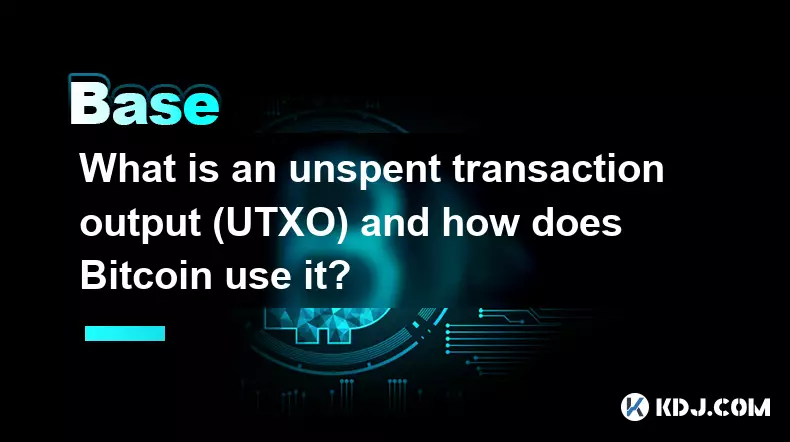-
 bitcoin
bitcoin $99296.318777 USD
-2.82% -
 ethereum
ethereum $3203.465899 USD
-6.84% -
 tether
tether $0.999590 USD
-0.03% -
 xrp
xrp $2.308913 USD
-4.00% -
 bnb
bnb $922.788929 USD
-3.53% -
 solana
solana $144.020807 USD
-5.89% -
 usd-coin
usd-coin $0.999798 USD
0.00% -
 tron
tron $0.291590 USD
-1.12% -
 dogecoin
dogecoin $0.163780 USD
-4.46% -
 cardano
cardano $0.526919 USD
-4.40% -
 hyperliquid
hyperliquid $37.888865 USD
-2.24% -
 bitcoin-cash
bitcoin-cash $510.515457 USD
-1.08% -
 chainlink
chainlink $14.436987 USD
-5.63% -
 stellar
stellar $0.267345 USD
-4.77% -
 unus-sed-leo
unus-sed-leo $9.175222 USD
0.53%
What is a 51% attack and how can it compromise a blockchain?
A 51% attack allows a malicious actor to disrupt blockchain integrity by double-spending coins and halting transactions, undermining trust in the network.
Nov 13, 2025 at 12:59 pm

Understanding the Concept of a 51% Attack
1. A 51% attack occurs when a single entity or group gains control over more than half of a blockchain network’s mining hash rate. This dominance allows them to manipulate the consensus mechanism, which is typically based on proof-of-work in many cryptocurrencies.
2. In a decentralized network, miners validate transactions and add new blocks to the chain through computational effort. The longest valid chain is accepted by all nodes as the true version of the ledger. When one party controls over 50% of the computing power, they can outpace the rest of the network in block creation.
3. This level of control enables the attacker to prevent new transactions from gaining confirmations, effectively halting payments between users. They can also reverse transactions they made while in control, leading to double-spending scenarios that undermine trust in the digital currency.
4. While such an attack does not allow the creation of new coins out of thin air or the theft of funds directly from others’ wallets, it severely damages the integrity of transaction history and network reliability.
5. Smaller blockchains with less distributed mining power are more vulnerable due to lower overall hash rate, making it cheaper and easier for malicious actors to accumulate majority control.
How a 51% Attack Disrupts Blockchain Integrity
1. Once an attacker achieves majority hash power, they can begin building a private fork of the blockchain in secret. While the public network continues processing transactions, the attacker excludes or reorders certain transactions on their hidden chain.
2. By selectively withholding blocks and releasing them at strategic moments, the attacker can overwrite previously confirmed transactions, enabling them to spend the same cryptocurrency twice. For example, they could send coins to an exchange, wait for confirmation, withdraw fiat money, then reverse the original transaction.
3. Nodes across the network follow protocol rules and accept the longest valid chain as authoritative. When the attacker reveals their longer, privately mined chain, honest nodes switch to it, unknowingly accepting the altered transaction history.
p>4. This undermines confidence in the immutability of the blockchain. If users cannot trust that confirmed transactions remain permanent, the fundamental value proposition of the technology erodes.
5. Repeated attacks or even credible threats can lead to delistings by exchanges, reduced liquidity, and long-term depreciation in token value, especially for smaller projects without robust security models.
Real-World Instances and Vulnerable Networks
1. Several cryptocurrencies have experienced confirmed 51% attacks, including Ethereum Classic (ETC), Bitcoin Gold (BTG), and Vertcoin (VTC). In these cases, attackers used rented hash power from platforms like NiceHash to temporarily gain majority control.
2. These incidents resulted in significant double-spends, with losses reaching millions of dollars in some cases. Exchanges such as Coinbase and Binance responded by increasing confirmation requirements or temporarily suspending deposits for affected coins.
3. Proof-of-work chains that use the same hashing algorithm as larger networks may be susceptible to cross-chain resource allocation, where excess capacity from bigger chains is redirected to compromise smaller ones.
4. Networks relying on less common mining hardware or those with declining miner participation face increased risk. As profitability drops, fewer miners secure the network, reducing the cost barrier for launching an attack.
5. Some projects attempt to mitigate this through algorithmic changes, checkpointing, or hybrid consensus mechanisms, but no solution completely eliminates the possibility under sufficient economic incentive.
Frequently Asked Questions
Can a 51% attack steal my private keys?No, a 51% attack cannot access or steal private keys. It only affects transaction ordering and confirmation on the blockchain. Funds in personal wallets remain secure unless the attacker has separate means of compromising device or software security.
Is Bitcoin immune to a 51% attack?Bitcoin is highly resistant due to its massive hash rate, making any attempt economically impractical. Acquiring enough computational power would require billions of dollars in infrastructure and energy costs, far exceeding potential gains from double-spending.
Do proof-of-stake blockchains face 51% attacks?While the terminology differs, similar risks exist in proof-of-stake systems if one entity accumulates over half the staked tokens. However, economic penalties (slashing) and identity tracking make such attacks more costly and detectable compared to anonymous mining in proof-of-work.
Disclaimer:info@kdj.com
The information provided is not trading advice. kdj.com does not assume any responsibility for any investments made based on the information provided in this article. Cryptocurrencies are highly volatile and it is highly recommended that you invest with caution after thorough research!
If you believe that the content used on this website infringes your copyright, please contact us immediately (info@kdj.com) and we will delete it promptly.
- Crypto Carnage: Navigating Selling and Liquidations in a Wild Market
- 2025-11-14 16:50:01
- Mohammed Siraj's First Spell Woes: An India Teammate's Critique
- 2025-11-14 14:40:02
- BTC, ETH, and Altcoin Picks: Navigating the Crypto Landscape
- 2025-11-14 14:50:01
- Coin Toss Tales: Temba Bavuma's Wager and India vs. SA Showdown
- 2025-11-14 12:50:01
- Shubman Gill, WTC Final, and the Coin Toss: A New Yorker's Take
- 2025-11-14 15:05:01
- Aerodrome Takes Flight: Unifying Ethereum DeFi Liquidity Across Chains
- 2025-11-14 15:10:02
Related knowledge

What is the difference between a transparent and a shielded transaction?
Nov 10,2025 at 05:59pm
Understanding Transparent Transactions in Cryptocurrency1. Transparent transactions are the standard form of transaction on most public blockchains li...

What is a "crypto airdrop farmer" and what strategies do they use?
Nov 09,2025 at 03:39pm
What Is a Crypto Airdrop Farmer?1. A crypto airdrop farmer is an individual who actively participates in blockchain projects to qualify for free token...

What is an unspent transaction output (UTXO) and how does Bitcoin use it?
Nov 12,2025 at 01:40am
Understanding the Concept of Unspent Transaction Output (UTXO)1. An Unspent Transaction Output, commonly referred to as UTXO, is a fundamental compone...

What is a "governance attack" and how can a DAO be compromised?
Nov 14,2025 at 05:59am
Understanding Governance Attacks in Decentralized Autonomous Organizations1. A governance attack occurs when an individual or group gains disproportio...

How do you track a crypto portfolio across multiple wallets and chains?
Nov 12,2025 at 04:19pm
The Evolution of Decentralized Exchanges in the Crypto Ecosystem1. Decentralized exchanges (DEXs) have transformed how users trade digital assets by r...

What is a "rug pull" clause in a smart contract and how can you spot it?
Nov 14,2025 at 11:40pm
Understanding the Concept of a Rug Pull in Decentralized Finance1. A rug pull refers to a malicious act in the cryptocurrency space where developers a...

What is the difference between a transparent and a shielded transaction?
Nov 10,2025 at 05:59pm
Understanding Transparent Transactions in Cryptocurrency1. Transparent transactions are the standard form of transaction on most public blockchains li...

What is a "crypto airdrop farmer" and what strategies do they use?
Nov 09,2025 at 03:39pm
What Is a Crypto Airdrop Farmer?1. A crypto airdrop farmer is an individual who actively participates in blockchain projects to qualify for free token...

What is an unspent transaction output (UTXO) and how does Bitcoin use it?
Nov 12,2025 at 01:40am
Understanding the Concept of Unspent Transaction Output (UTXO)1. An Unspent Transaction Output, commonly referred to as UTXO, is a fundamental compone...

What is a "governance attack" and how can a DAO be compromised?
Nov 14,2025 at 05:59am
Understanding Governance Attacks in Decentralized Autonomous Organizations1. A governance attack occurs when an individual or group gains disproportio...

How do you track a crypto portfolio across multiple wallets and chains?
Nov 12,2025 at 04:19pm
The Evolution of Decentralized Exchanges in the Crypto Ecosystem1. Decentralized exchanges (DEXs) have transformed how users trade digital assets by r...

What is a "rug pull" clause in a smart contract and how can you spot it?
Nov 14,2025 at 11:40pm
Understanding the Concept of a Rug Pull in Decentralized Finance1. A rug pull refers to a malicious act in the cryptocurrency space where developers a...
See all articles










































































